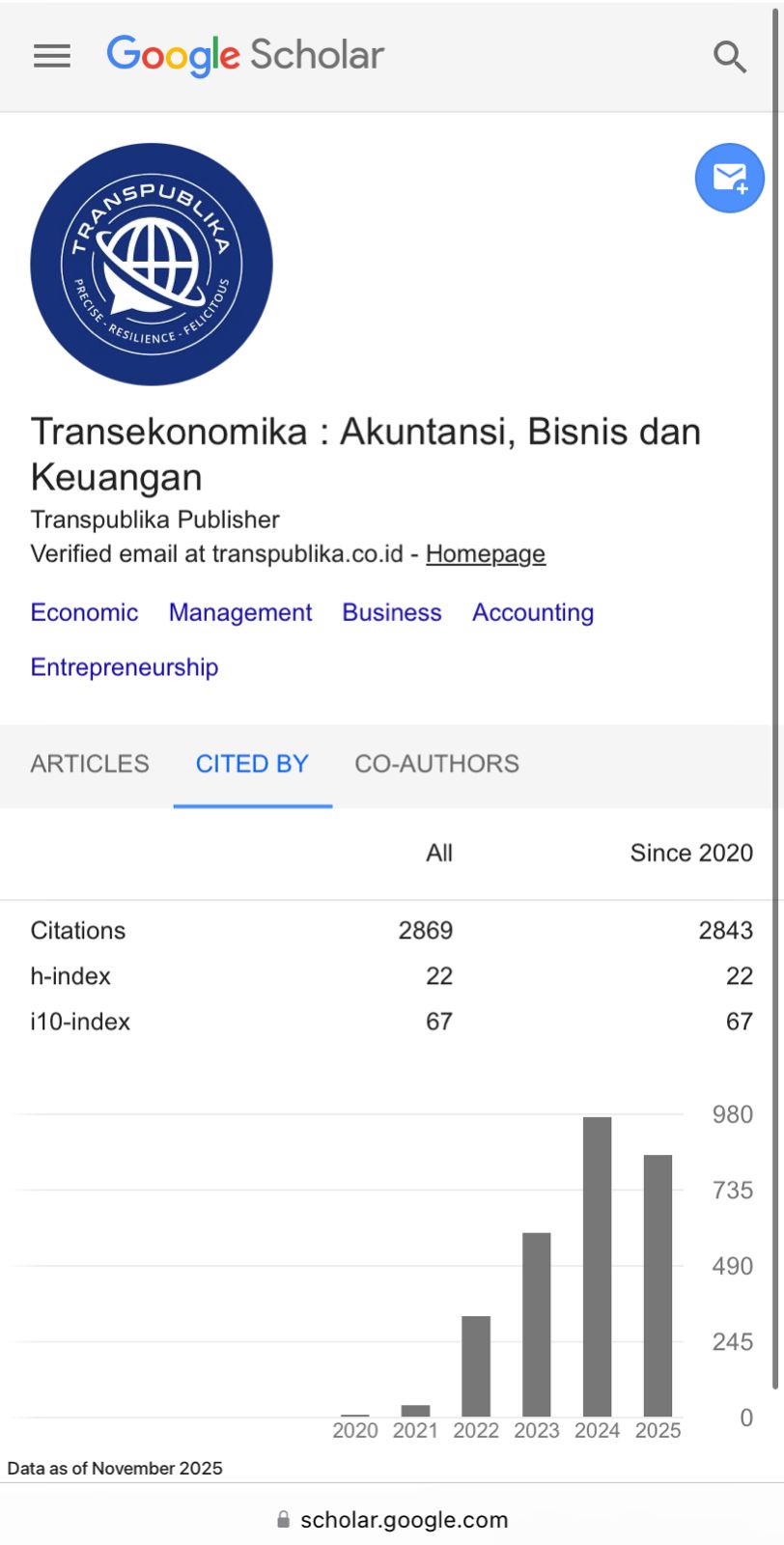ANALISIS PERKEMBANGAN PENDUDUK TERHADAP TINGKAT PARTISIPASI ANGKATAN KERJA DI INDONESIA
Abstract
The demographic structure and change that happens through time is one of the most influential factors on economic development. Ignoring the demographic structure might result in discrepancies, which will affect planning issues. Ultimately, this results in inequalities in several economic, social, and political spheres. Meanwhile, the economic sector is one of the most effective areas of the demographic structure. This research aims to determine the extent to which population development factors impact Indonesia's work force participation rate. This research employs a time-series analysis technique using the ARDL Error Correction Model analytical instrument. ARDL models may be used to models with varying degrees of stationarity. Short-term fertility characteristics had a significant and negative influence on the work force participation rate, according to the findings of the investigation. On the other side, the dependence ratio and short-term government expenditures have a significant and positive influence on the work force participation rate. However, global factors have insignificant influence on the labor force participation rate in long-term.
Downloads
References
Adioetomo, S. M., Samosir, O. B., & Yasin, M. (2016). Dasar-Dasar Demografi (S. M. Adioetomo & O. B. Samosir (eds.); 2nd ed.).
Agung Pratama, B., Muljaningsih, S., & Asmara, K. (2021). Pengaruh Pdrb, Tingkat Upah Minimum Dan Pengeluaran Pemerintah Terhadap Penyerapan Tenaga Kerja Di Kabupaten Sidoarjo. Jurnal Syntax Admiration, 2(8), 1395–1406. https://doi.org/10.46799/jsa.v2i8.293
Ahn, N., & Mira, P. (2002). A note on the changing relationship between fertility and female employment rates in developed countries. Journal of Population Economics, 15(4), 667–682. https://doi.org/10.1007/s001480100078
Alisman. (2018). Analisis Pengaruh Pertumbuhan Ekonomi Dan Pengeluaran Pemerintah Terhadap Penyerapan Tenaga Kerja Di Kabupaten Aceh Barat. Jurnal REP (Riset Ekonomi Pembangunan), 3(2), 321–333. https://doi.org/10.31002/rep.v3i2.1040
Bloom, D. E., Canning, D., Fink, G., & Finlay, J. E. (2009). Fertility, female labor force participation, and the demographic dividend. Journal of Economic Growth, 14, 79–101. https://doi.org/10.1007/s10887-009-9039-9
Bongaarts, J. (1978). A Framework for Analyzing the Proximate Determinants of Fertility. Population and Development Review, 4(1), 105–132. https://doi.org/10.2307/1972149
Bubi, Zakiah, W., & Marpaung, K. (2018). Analisis Pengeluaran Pemerintah, Investasi Swasta Dan Produk Domestik Regional Bruto(PDRB)Terhadap Penyerapan Tenaga Kerja Di Kalimantan. Journal Magister Ilmu Ekonomi, 4(2).
Buhaerah, P. (2017). Pembangunan Keuangan dan Pertumbuhan Ekonomi: Studi Kasus Indonesia. Kajian Ekonomi & Keuangan, 1(2), 165–180.
Caldwell, J. C., & Schindlmayr, T. (2003). Explanations of the fertility crisis in modern societies: A search for commonalities. Population Studies, 57(3), 241–263. https://doi.org/10.1080/0032472032000137790
Chevalier, A., & Viitanen, T. K. (2002). The causality between female labour force participation and the availability of childcare. Applied Economics Letters, 9(14), 37–41. https://doi.org/10.1080/13504850210138469
Doran, J. (2012). An analysis of the interdependence of demographic factors, labour effort and economic growth in Ireland. International Journal of Social Economics, 39(3), 221–237. https://doi.org/ttp://dx.doi.org/10.1108/03068291211199387
Feriyanto, N. (2014). Ekonomi Sumber Daya Manusia dalam Perspektif Indonesia. UPP STIM YKPN.
Guan, X., Zhou, M., & Zhang, M. (2015). Using the ARDL-ECM Approach to Explore the Nexus Among Urbanization, Energy Consumption, and Economic Growth in Jiangsu Province, China. Emerging Markets Finance and Trade, 51(2), 391–399. https://doi.org/10.1080/1540496X.2015.1016840
Harsoyo, A., & Sulistyaningrum, E. (2018). Pengaruh Fertilitas Terhadap Partisipasi Tenaga Kerja Perempuan. Jurnal Ekonomi Kuantitatif Terapan, 11(2), 130. https://doi.org/10.24843/jekt.2018.v11.i02.p01
Hasti, A. D., & Destiningsih, R. (2019). Analisa Determinasi TPAK di Jawa Tahun 2015-2019. Jurnal Humaniora, 4(2), 244–255.
Ikhwan, & Siradjuddin. (2017). Pengaruh Pengeluaran Pemerintah Dan Upah Minimum Regional (Umr) Terhadap Tingkat Partisipasi Angkatan Kerja Di Kota Makassar. EcceS (Economics, Social, and Development Studies), 4(1).
Jumhur. (2020). Penerapan Autoregressive Distributed Lag Dalam Memodelkan Pengaruh Inflasi, Pertumbuhan Ekonomi, Dan Fdi Terhadap Pengangguran Di Indonesia. Jurnal Ekonomi Bisnis Dan Kewirausahaan (JEBIK), 9(3), 250–265.
Kuncoro, M. (2010). Dasar-Dasar Ekonomika Pembangunan (Kelima). UPP STIM YKPN.
Mangkoesoebroto, G. (2001). Ekonomi Publik (ed. 3, Cet.). BPFE UGM.
Miri, N., & Maddah, M. (2018). The Effect of Age Structure of the Population on Economic Growth in Iran using the ARDL Approach. AIP Conference Proceedings, 1978. https://doi.org/10.1063/1.5043839
Nazah, N., Duasa, J., & Arifin, M. I. (2021). Fertility and Female Labor Force Participation in Asian Countries; Panel ARDL Approach. Jurnal Ekonomi & Studi Pembangunan, 22(2), 272–288. https://doi.org/10.18196/jesp.v22i2.11142
Pratiwi, N. P. A., & Indrajaya, I. G. B. (2019). Pengaruh Pertumbuhan Ekonomi Dan Pengeluaran Pemerintah Terhadap Penyerapan Tenaga Kerja Serta Kesejahteraan Masyarakat Di Provinsi Bali. Buletin Studi Ekonomi, 24(2), 220–233. https://doi.org/10.24843/bse.2019.v24.i02.p05
Razin, A., & Schwemmer, A. (2022). Ageing and Welfare State Policy: A Macroeconomic Perspective. Journal of Government and Economics, 5. https://doi.org/10.1016/j.jge.2022.100030
Shittu, W. O., & Abdullah, N. (2018). Fertility, education, and female labour participation. International Journal of Social Economics. https://doi.org/10.1108/IJSE-11-2017-0559
Skirbekk, V., Dieleman, J. L., Stonawski, M., Fejkiel, K., Tyrovolas, S., & Chang, A. Y. (2022). The health-adjusted dependency ratio as a new global measure of the burden of ageing: a population-based study. The Lancet Healthy Longevity, 3(5), e332–e338. https://doi.org/10.1016/S2666-7568(22)00075-7
Todaro, M. P., & Smith, S. C. (2011). Pembangunan Ekonomi Edisi Kesebelas Jilid 1. Erlangga.
Widarjono, A. (2018). Ekonometrika (kelima). UPP STIM YKPN.
Wilis, R. (2015). Analisis Pengaruh Upah Minimum, Investasi Dan Pengeluaran Pemerintah Terhadap Penyerapan Tenaga Kerja Berdasarkan Pendidikan. El Dinar, 3(1), 12–26. https://doi.org/10.18860/ed.v3i1.3335
Yıldırım, D. Ç., & Akinci, H. (2020). The dynamic relationships between the female labour force and the economic growth. Journal of Economic Studies, 1970. https://doi.org/10.1108/JES-05-2020-0227
Copyright (c) 2022 Andini Ayuningtyas, Fitrah Sari Islami

This work is licensed under a Creative Commons Attribution 4.0 International License.








.png)







.png)


.png)

.png)















